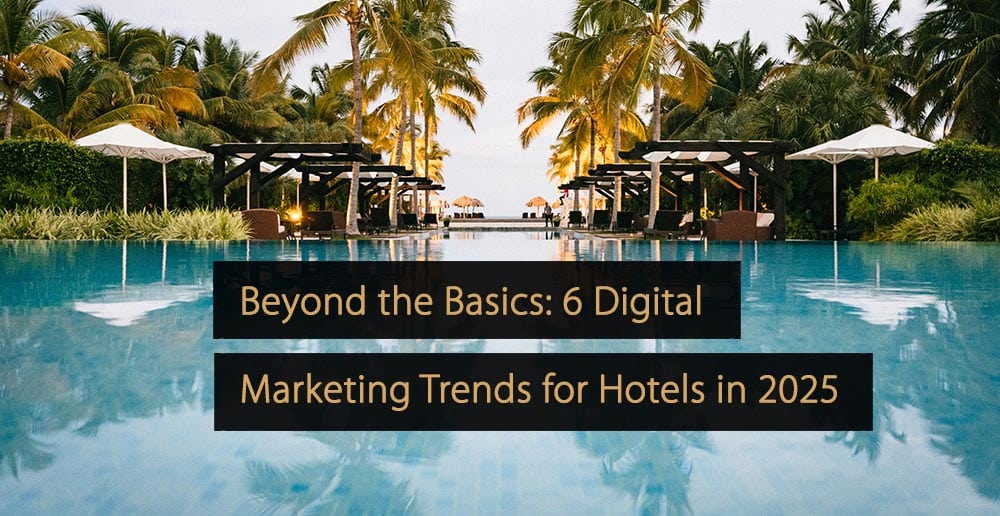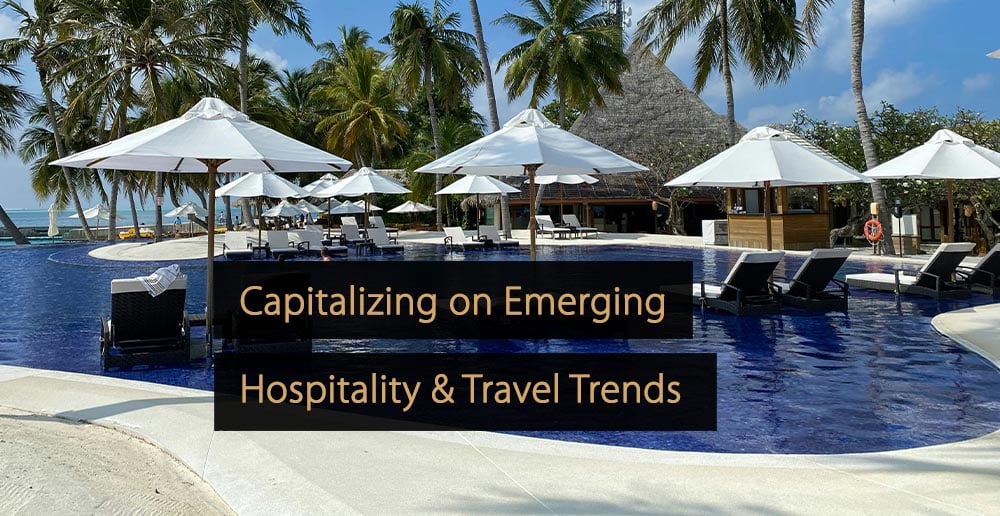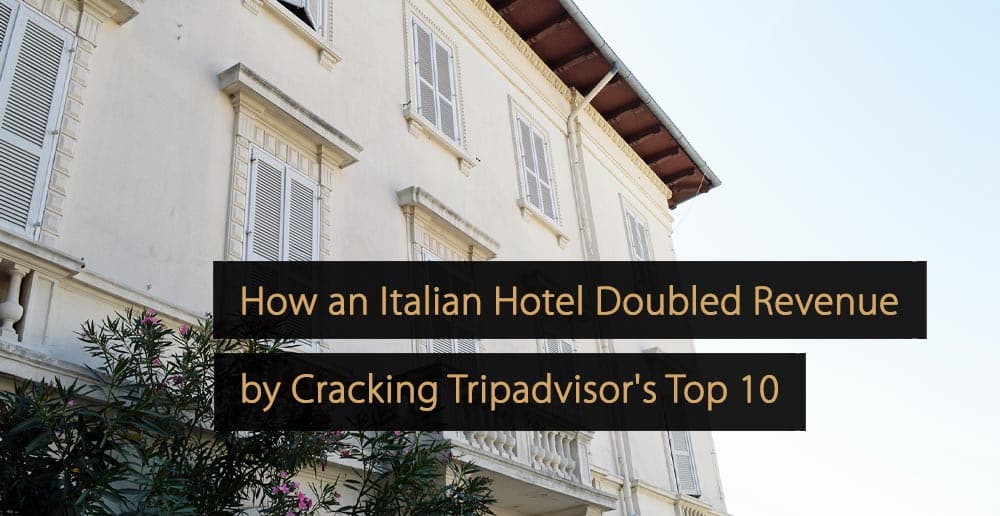Online travel agencies (OTAs) have become a pivotal part of the hospitality industry, impacting the way properties market online and travelers do their research. It’s predicted that, on average, travelers make 25 website visits before booking.
Therefore, properties need to boost visibility across the internet on OTAs, metasearch sites, social media, and their direct website to draw in as many potential guests as possible.
While OTAs have evolved since their introduction in the 1990s, the pandemic accelerated change across channels, providing new and exciting opportunities for properties to attract more guests and increase revenue.
4 new OTA Trends to Help Increase Reservations & Revenue
Below you’ll learn more about four new OTA trends that have emerged this year and tips for developing your property’s unique channel distribution strategy.
1. Introduction of sustainability badges
The first OTA trend is sustainability. Sustainability has been a rising trend across industries, and consumers expect businesses of all shapes and sizes to adapt their practices to become greener. 61% of global travelers said that the pandemic made them want to travel more sustainably, with 73% more likely to choose accommodations that have implemented sustainability practices.
While many hotels have taken it upon themselves to implement sustainability practices such as reducing single-use plastics or using energy-efficient lighting, it’s often difficult to promote this to travelers. Booking.com found that 41% of travelers did not know how to find sustainable travel options, so they implemented ‘sustainability badges’ to help properties promote their efforts.
Properties listed on Booking.com can choose from over 32 sustainability practices verified by independent sustainability efforts to attract more eco-conscious travelers and win over traffic from similar properties without sustainability measures.
2. Increased Options for Long-term Stays
With the rise in remote work, travelers have more flexibility to book longer stays that mix business and leisure. This provides an excellent opportunity for hoteliers to attract longer-stay, more profitable than short-stay guests because of the lower cost associated with keeping rooms filled over constantly acquiring new guests and servicing rooms daily. Airbnb’s Q3 earnings report showed that long-term stays of at least 28 days are the fastest-growing trip length, up 14% from the year before.
In response to the increase in “workcations,” OTAs have adjusted their offerings to meet growing demand. For example, Agoda Long Stay is a program that offers travelers discounted, contract-free rates on stays longer than 30 days. Properties that take part in this program are guaranteed a minimum monthly stay per guest and can capitalize on the long-term stay trend.
3. Domestic Leisure Travel Skyrockets
Another OTA trend is that domestic travel is soaring. Business travel took a hit during the pandemic and isn’t expected to recover until at least 2024 or 2025 – if it ever does at all. However, domestic leisure travel has reached all-time highs. Within the US alone, 1.4 billion domestic trips were taken, and 75% of all travel spending in the UK came from domestic tourism.
Many of these domestic tourists were remote workers looking for a change of scenery close to home. Properties that want to capitalize on domestic travel need to invest in the proper amenities such as high-speed wifi, desks, workspaces, and more to attract local and domestic remote workers.
In addition, properties should be listed on prominent regional OTAs to attract travelers from other regions looking for a quick getaway. For example, if your property is in Spain, ensure it’s listed on top OTAs in the region, like Agoda, HRS, and Hotelsclub.
4. Unique Travel Experiences Lead in Popularity
It’s no surprise that travelers today seek a unique travel experience. OTAs have adapted their platforms to cater to this shift in expectations by introducing new categories such as tiny homes, caves, castles, yurts, and much more. In the first quarter of 2022, Airbnb’s nights booked for summer travel to unique property types increased by over 80%.
Properties must rethink their unique offerings and how they market these online to get listed across different categories on OTAs (and deliver accordingly upon a guest’s arrival). OTAs like Airbnb are investing in special properties as they work to redesign their facility. For example, in June 2022, Airbnb announced a $10 million USD OMG! Fund was created to finance 100 property owners as they transformed their property into a unique travel destination.
How to Build the Optimal OTA Channel Mix
Hundreds of OTAs exist online today, making it difficult for property owners to understand what channels are best for their property. Different OTAs cater to different property types and audiences, and properties must first understand their unique market position before connecting.
While the optimal channel mix will differ for every property, there are a few guiding factors to help shape your strategy. Industry experts recommend connecting to at least six channels and diversifying these channels to include global, regional, and niche OTAs.
Global OTAs, like Expedia and Booking.com, attract hundreds of millions of visitors each month and are critical for driving traffic and visibility. Regional OTAs attract visitors from specific domestic or international markets. Niche OTAs target particular audiences and are often the most lucrative segment of OTAs for properties that fit the particular niche profile.
For example, a luxury boutique hotel in Mexico may decide to list its property on the following channels:
- Booking.com (Global)
- Airbnb (Global)
- Despegar / Decolar (regional to Mexico)
- Agoda (targeting the Asian region)
- Mr & Mrs. Smith (niche – luxury)
Being active across different OTAs helps increase a property’s visibility and familiarity amongst travelers researching a trip, increasing the likelihood of acquiring a booking (either directly on their website or indirectly via an OTA).
Using a Channel Manager to Support Your Strategy
There are many OTAs that you can use to your advantage. With the right channel management strategy and software, you can easily connect to and manage six OTAs or more and adapt your profiles to cater to changing industry trends.
Managing multiple channel connections without a channel manager can be extremely time-consuming and often results in overbookings. A channel manager can help you easily connect to channels and update your room inventory, and rates in real-time as property data changes, reservations, or cancellations occur.
Free OTA Guide: A Hotelier’s Guide to Top Distribution
Whether you like them or not, online travel agencies (OTAs) are essential to any hotel distribution strategy. Adopting the right OTAs as part of your distribution strategy can also help drive direct bookings through the “billboard effect” if done correctly.
Creating a comprehensive channel mix that includes various OTAs will ensure you reach your target audience and secure a steady stream of reservations.
Click here to download “The Ultimate Guide to OTAs”.
By making sure that you are listed on the right sites and that your website can process direct bookings, you can also take advantage of the Billboard Effect. Remember to consider the new OTA trends and be strategic about your distribution and diversify your channel mix across different types of OTAs.
More Tips to Grow Your Business
Revfine.com is the leading knowledge platform for the hospitality and travel industry. Professionals use our insights, strategies, and actionable tips to get inspired, optimize revenue, innovate processes, and improve customer experience.Explore expert advice on management, marketing, revenue management, operations, software, and technology in our dedicated Hotel, Hospitality, and Travel & Tourism categories.








Leave A Comment